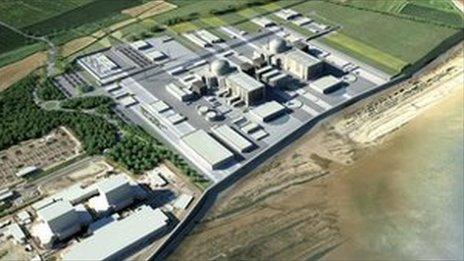Hinkley C nuclear reactor roof lifted into place
- Published

The power station is Europe's biggest building site
Engineers have lifted a steel roof onto a building which will house the first of two nuclear reactors at Hinkley Point in Somerset.
Hundreds of people helped with the delicate operation to get the 245-tonne steel dome into position.
It means the first reactor can be installed next year, ready to be switched on in June 2027.
Engineers at EDF said the "challenging job" was completed in just over an hour.
They first broke the ground on the new nuclear station in March 2017. Now, some 10,000 people work on what is Europe's largest building site.
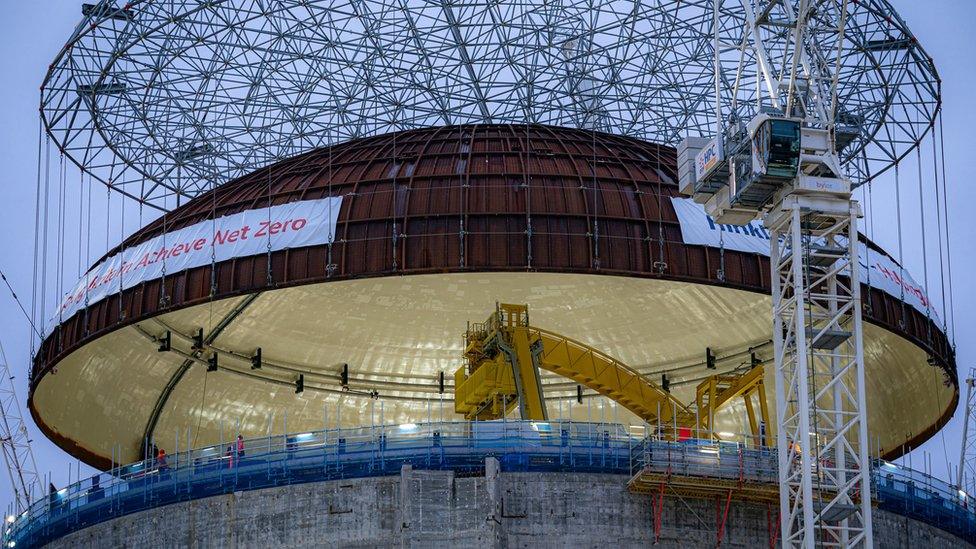
The dome roof was successfully "landed" on Friday

100 tonne dumper trucks prepared the ground for the new reactor in 2017, in the shadow of the old reactors
They have faced delays from Covid restrictions and the budget has doubled to £33bn, so getting the roof on the first of the two reactor buildings is a big deal.
EDF's nuclear island director Simon Parsons said it was a "fantastic night".
"Lifting the dome into place is a celebration of all the work done by a fantastic team. The smiles on people's faces this morning were something else.
"Now we can get on with the fitting of equipment, pipes and cables, including the first reactor which is on site and ready to be installed next year."
Nuclear minister Andrew Bowie hailed the "major milestone" in the building project.
He said: "This is a key part of the UK Government's plans to revitalise nuclear."
But many still question whether Hinkley Point C will be worth all the money, with Roy Pumfrey of the Stop Hinkley campaign describing the project as "shockingly bad value".
Why lift the roof on?
The steel dome is bigger than the one on St Paul's Cathedral in London.
To lift it onto the 44-metre-high reactor building, they needed the world's largest land-based crane, dubbed Big Carl by engineers.
So why not just build the roof on top of the building?
The answer lies in a remote corner of Normandy in France, near a village called Flamanville.
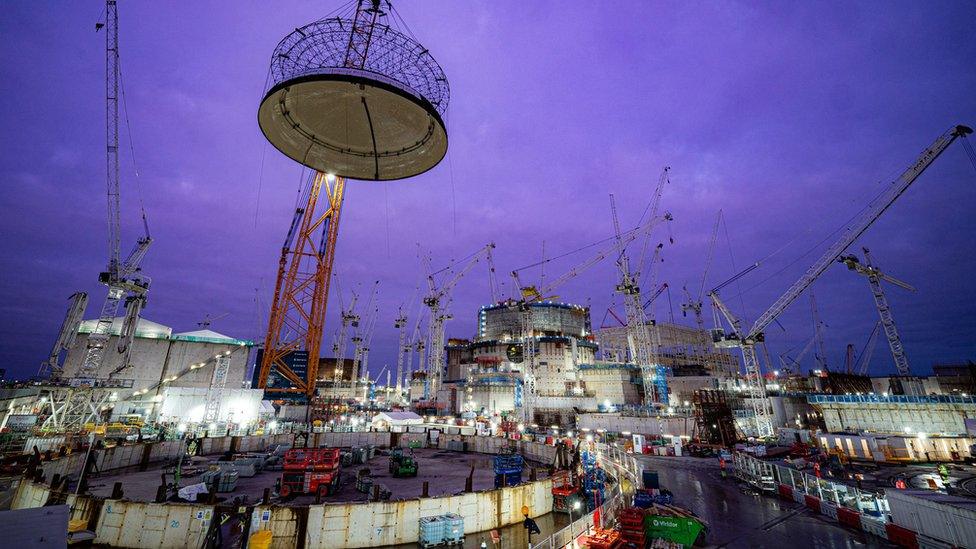
The delicate operation to lift the roof into place took place on Friday

Inside the reactor building at EDF's power station in Flamanville, Normandy
EDF has been building a nuclear reactor there since 2007, ten years before they started in west Somerset.
The project is now a decade behind schedule and has still not been approved by French regulators.
Why? Because of cracks found in the precision welding on the roof of the reactor building.
In France, they built the roof in situ, out in the open.
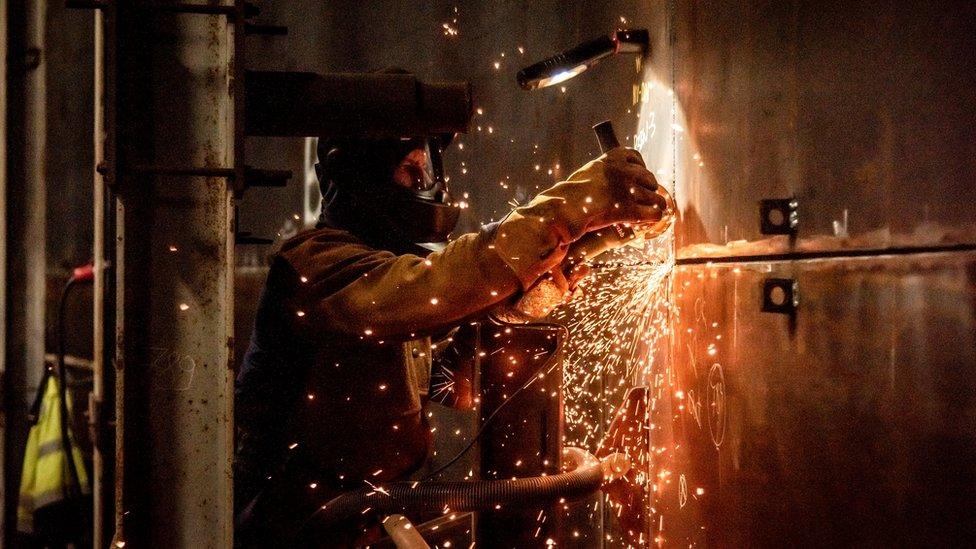
The steel roof and walls of the Somerset reactor building were welded inside a temporary workshop
Engineers have decided welding outside, exposed to wind and rain, compromised the high standards needed for a nuclear reactor.
So in Somerset they built a temporary workshop, which looks like a fair sized building itself. All the welding has been done inside, and then the completed roof was lifted into place.
Is it on time or on budget?
No, neither. When Hinkley C was first approved a decade ago, EDF said it would cost £14bn.
Four years later, in 2017, they finally started construction. By now the cost had risen to £19.5bn, and EDF said the plant would be finished by the end of 2025.
Today, the cost has risen to £33bn, and it is now hoped Hinkley C will produce electricity by the end of 2027.
"Nobody believes it will be done by 2027," said campaigner Roy Pumfrey.
"The costs keep rising, and the price of Hinkley's electricity will only get dearer," they added.
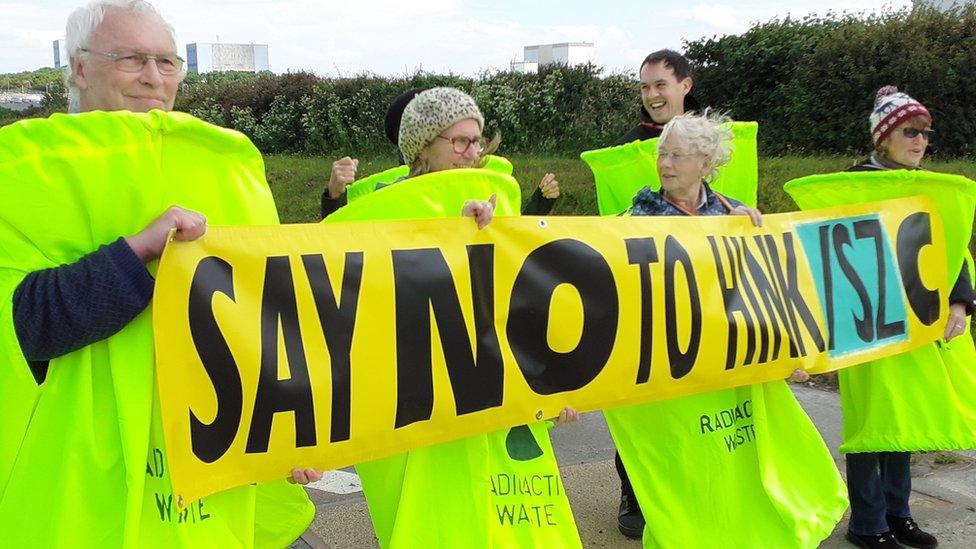
Local campaigners have tried to block the nuclear power plant for 15 years
On the other hand, the increase in costs is not a problem for British energy bill payers, or the UK government.
EDF agreed to pay the full cost of construction, including any increases.
When I met Grant Shapps, then the UK Energy Secretary, at the site in April, he shrugged off the cost increases.
He said: "I think we should all be rather pleased it is not the British tax payer - it is France and EDF who are paying."
In return, the UK government agreed a set rate for Hinkley's power, called the Strike Price, back in 2013. The idea was this would guarantee the income from Hinkley Point for 35 years, allowing investors to get their money back.
Will it be worth the money?
Back in 2013, the Strike Price was set at £92.50 for each megawatt hour of power. At the time, the wholesale price of electricity was around £50/MWh, so Hinkley C looked expensive.
But since then, global shocks like the war in Ukraine have increased the cost of power substantially.
Recently, the wholesale price hit £140/MWh.
Hinkley C's price does increase with inflation, but even so, it now stands at around £128/MWh, making it look like a good deal.
But is it?
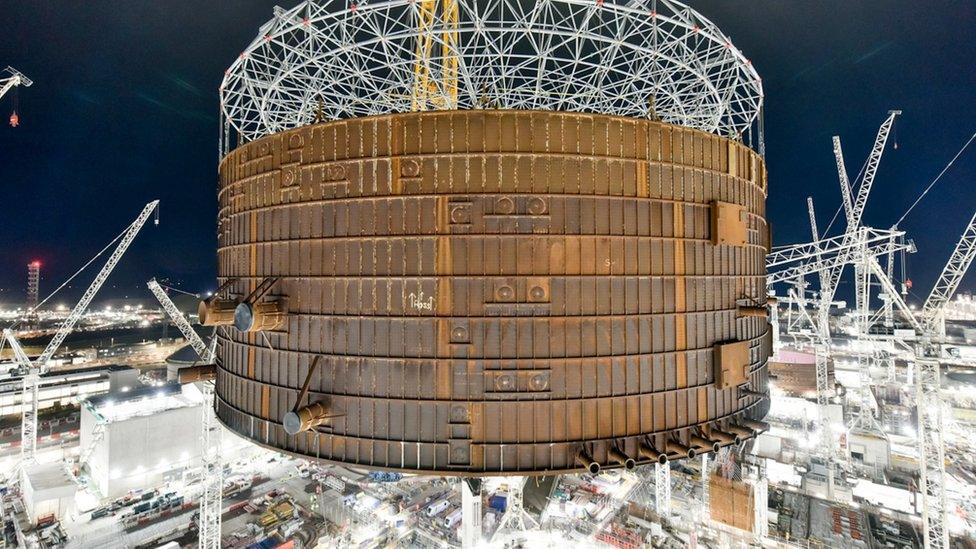
At £33bn, Hinkley Point C will be the most expensive power plant in the world
"It would be a great deal if Hinkley was cooking our Christmas Turkeys this year," said Henry Edwardes-Evans, a leading energy analyst.
He is an associate editor at industry analysts S&P Global.
By the time Hinkley C starts generating in 2028, he expects the price of wholesale electricity to fall.
"We're looking at a price of between £70 and £80/MWh, partly because of the increase in renewable power by then," he said.
By then inflation will have pushed Hinkley C's power to around £150/MWh, making it nearly double the market price.
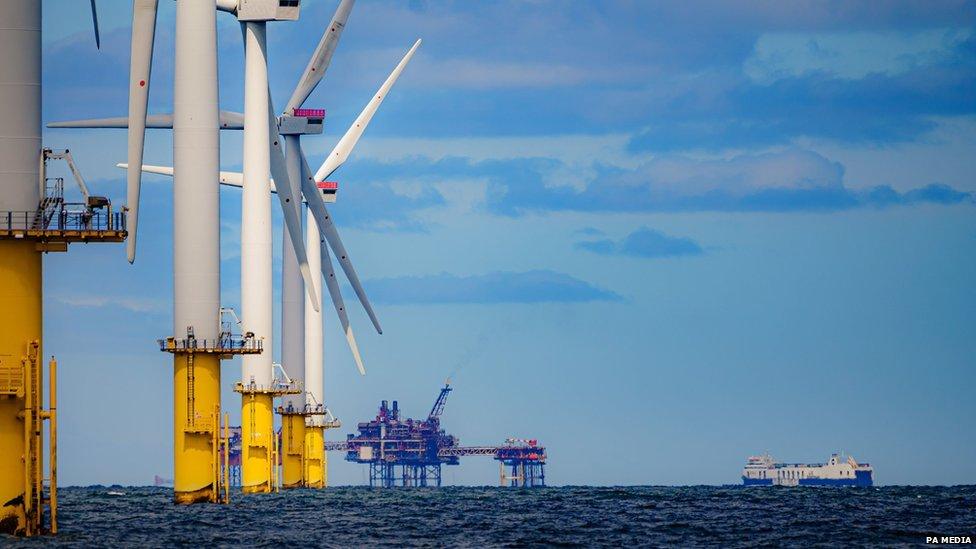
Windpower is now much cheaper than nuclear energy from Hinkley Point
Meanwhile, the price of wind power has fallen fast, to around £50/MWh. Anti-nuclear campaigners insist wind is now a far better deal.
Roy Pumfrey added: "The prospect of bigger and bigger windfarms getting cheaper and cheaper to put on stream makes wind an extremely good buy, whereas we might as well say 'Goodbye' to Hinkley C for all the value it is going to offer us."
But price, according to analyst Henry Edwardes-Evans, is only one factor.
"About a third of UK power is still produced from gas. We need to get gas out of the system to decarbonise our energy, and nuclear is a big part of that," he said.
UK government minister Andrew Bowie added: "Hinkley Point C will reduce our reliance on imported energy and support our shift to net zero."
Since it was first proposed, Hinkley Point C has been at the centre of controversy and debate.
But on the busy construction site where 10,000 people toil in a forest of 100 cranes, they are just pleased to get the roof on.

Follow BBC West on Facebook, external, X, external and Instagram, external. Send your story ideas to: bristol@bbc.co.uk, external
Related topics
- Published27 April 2023
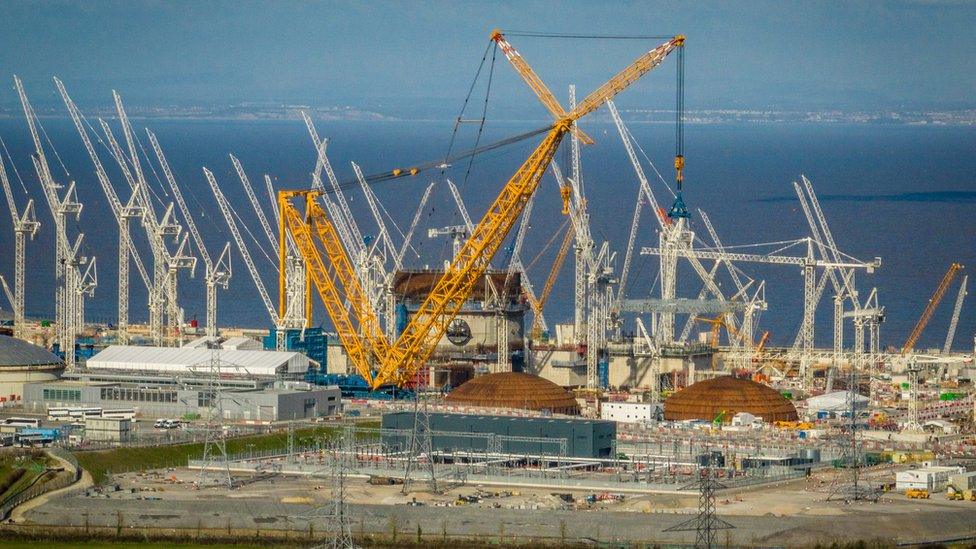
- Published1 August 2022
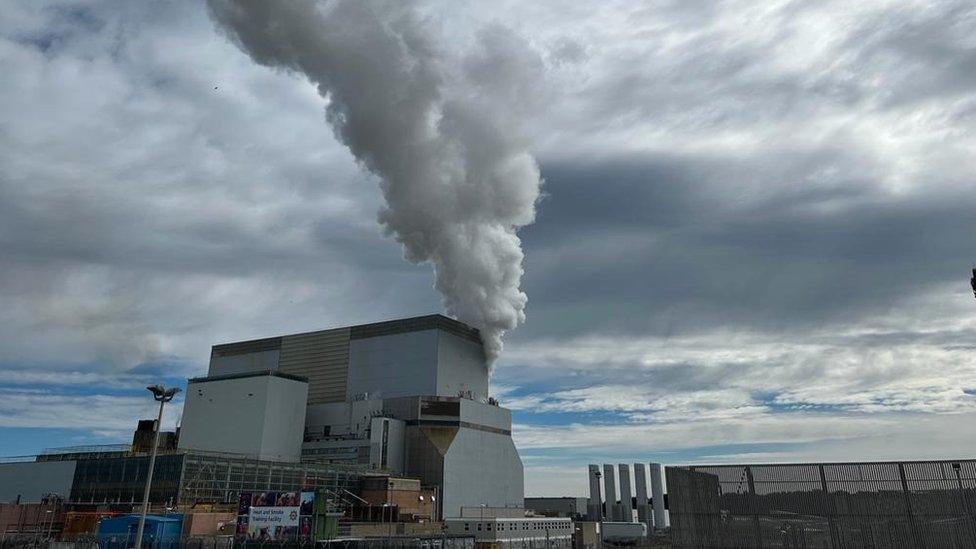
- Published27 January 2021
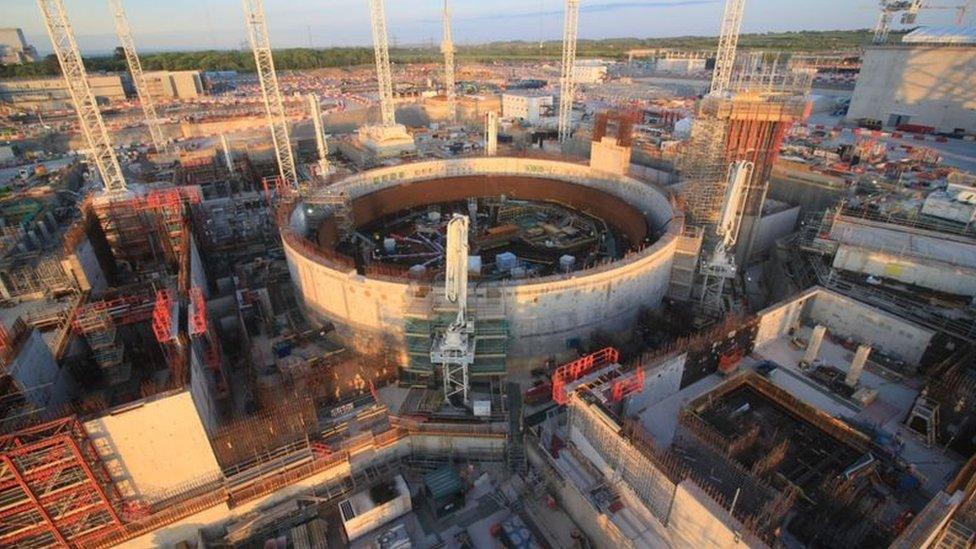
- Published29 September 2016
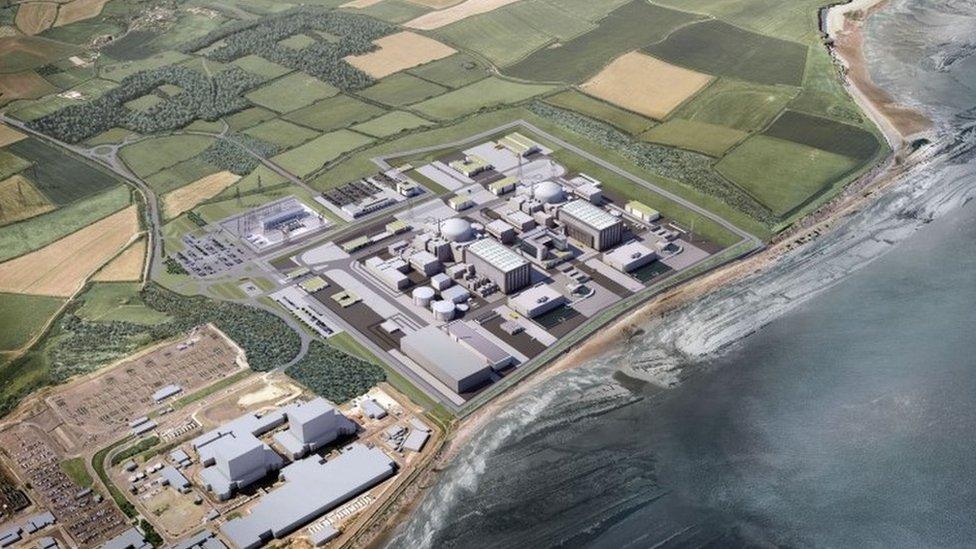
- Published20 March 2013
